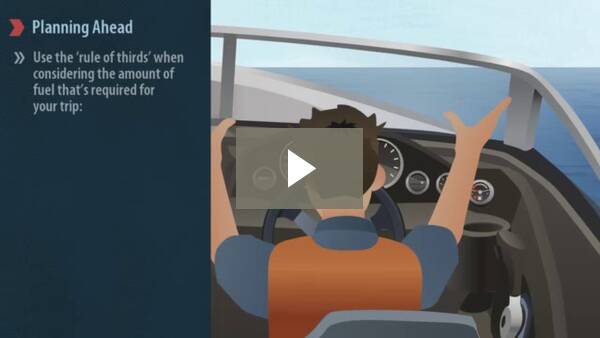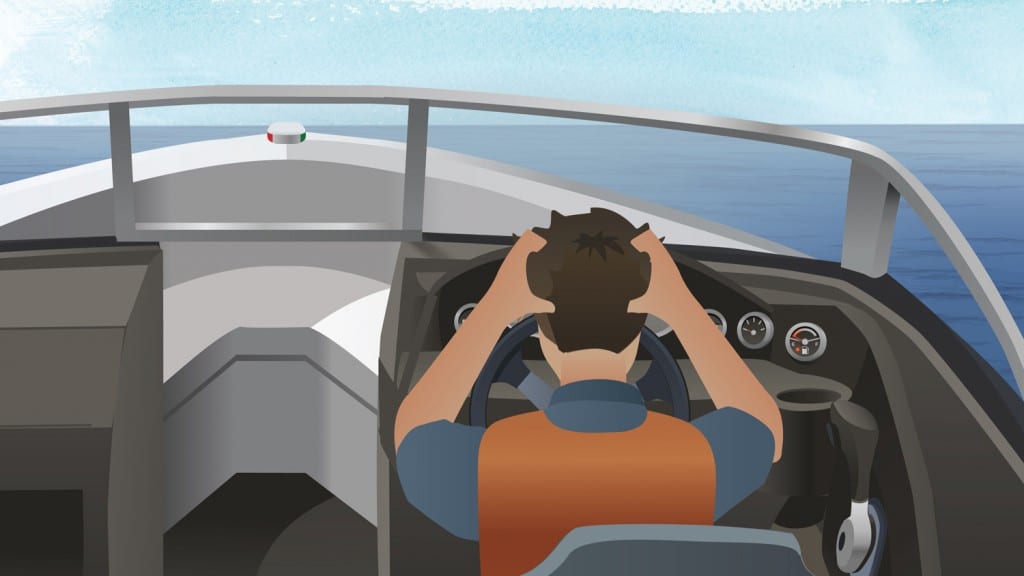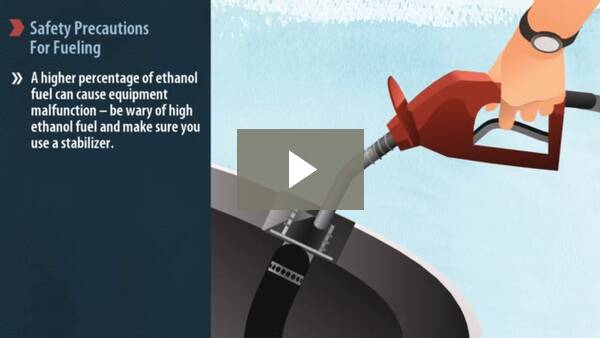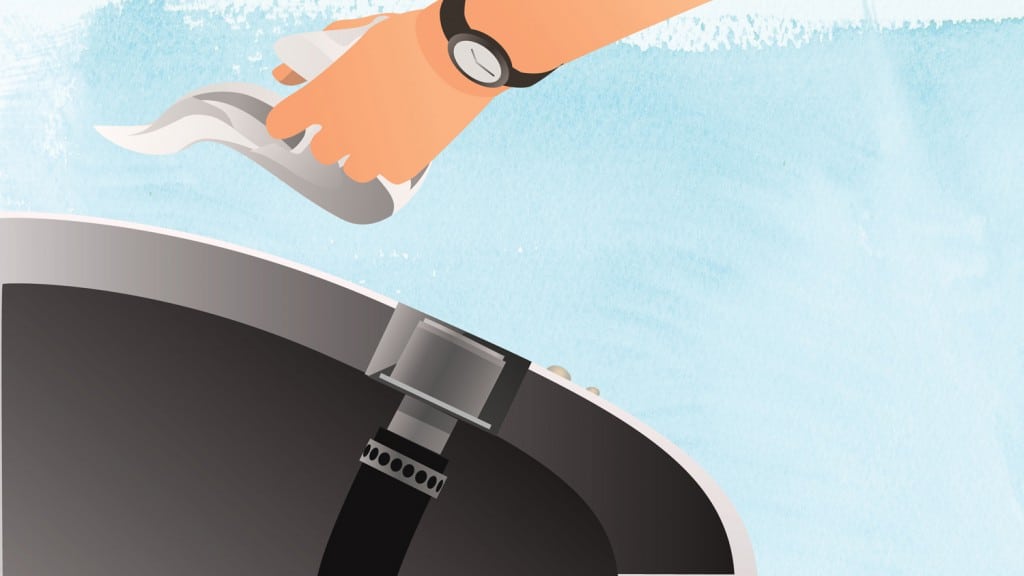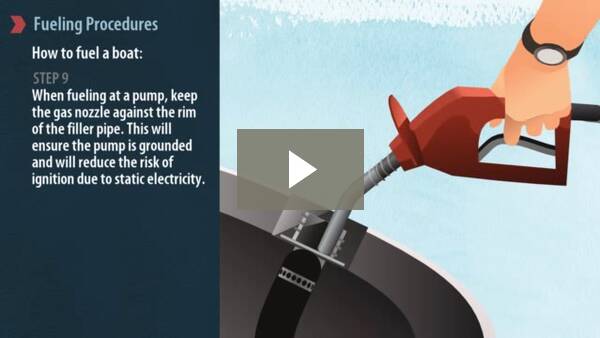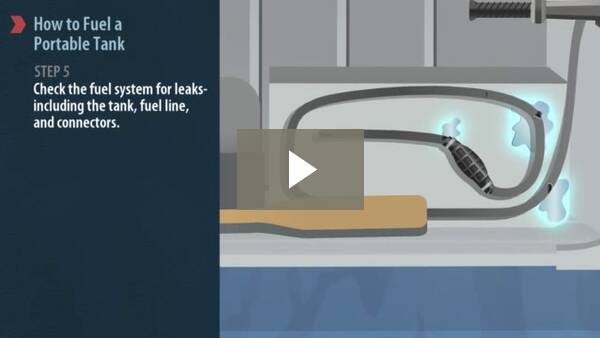Planning Ahead
Running out of fuel is the number one cause of boater distress. Make sure that you plan your trip requirements and carry enough fuel to get you there… and back without any trouble.
Use the ‘rule of thirds’ when considering the amount of fuel that’s required for your trip:
- One-third (1/3) to go out.
- One-third (1/3) to get back.
- One-third (1/3) held in reserve.
Safety When Fueling a Boat:
- Never overfill your tank or spill fuel—spilling fuel into the engine or passenger compartment can increase the risk of explosion or fire, and spilling fuel into the water will harm the marine environment.
- Never smoke while you fuel a boat.
- Refuel during daylight hours when an artificial light source is not needed (the electrical current from the artificial light source can cause a fire).
- Refuel portable tanks on shore—never on the boat.
- Ask your passengers to exit the boat until you’re finished fueling, for their safety.
- Never use ethanol to fuel a boat —it can cause your equipment to malfunction.
- After fueling, open any ports, hatches and doors to ventilate fumes that may have entered your boat during the fueling process.
- If your boat has an inboard engine, you should always run the blower for at least four minutes before starting the engine.
- Perform the ‘sniff test’ to check your bilges—make sure you don’t smell gasoline.
Remember: Gasoline is highly explosive when mixed with air and when boat fires DO happen, it’s usually during or shortly after fueling. Always practice safe fueling.
How to Fuel a Boat:
Step 1) Ensure your boat is securely moored to the dock.
Step 2) Shut down all motors.
Step 3) Ask your passengers to exit the boat and to wait on shore.
Step 4) Extinguish any open flames, including cigarettes and pilot lights.
Step 5) Close all doors, windows, ports and any hatches.
Step 6) Shut down all electrical equipment.
Step 7) Have a fire extinguisher available in case of emergency.
Step 8) Check for leaks and fuel odors.
Step 9) When fueling at a pump, keep the gas nozzle against the rim of the filler pipe. This will ensure the pump is grounded and will reduce the risk of ignition due to static electricity.
Step 10) Never overfill the fuel tank. Be sure to clean up any spillage and securely tighten the filler cap.
Step 12) If your pleasure craft is equipped with an enclosed engine compartment, you must operate the ventilation system (blower) for at least four minutes prior to engine start-up.
Step 13) Re-check for the smell of fuel vapors or odors (do not re-start your engine if excessive fuel odors are detected).
Step 14) Start the motor.
How to Fuel a Personal Watercraft (PWC):
Some additional considerations should be taken if you’re fueling a PWC:
Step 1) Shut down the engine.
Step 2) Ask your passengers to exit the PWC and to wait on shore.
Step 3) Extinguish any open flames, including cigarettes.
Step 4) Visually check the gas separator for the presence of water and remove any traces of water before refueling.
Step 5) Ensure the fuel selector switch is turned to the ‘OFF’ position.
Step 6) If your PWC requires mixed gasoline, always pre-mix the gas and oil in an approved portable container before refueling your PWC.
Step 7) If your PWC is equipped with an oil injection system, ensure the oil tank is filled with the correct oil for your PWC.
Step 8) Fill the tank.
Step 9) Tighten the fuel filler cap and check for fuel odors.
Step 10) Turn the fuel selector switch to the ‘ON’ position and restart the engine.
How to Fuel a Portable Tank:
Step 1) Secure your boat to the dock.
Step 2) Shut down the motor.
Step 3) Extinguish any open flames, including cigarettes.
Step 4) Disconnect the fuel line and move the portable tank to the dock.
Step 5) Check the fuel system for leaks—including the tank, fuel line, and connectors.
Step 6) For mixed gasoline, alternate the addition of gas and oil as the tank is filled. Ensure the gas and oil are thoroughly mixed before reconnecting the fuel system to the motor.
Step 7) Once the tank is filled, place it back in the boat.
Step 8) Reconnect the fuel line and double-check for leaks.
Step 9) Start the motor.


